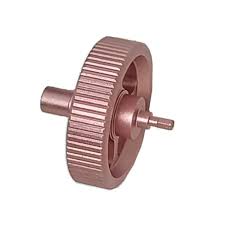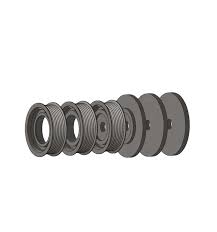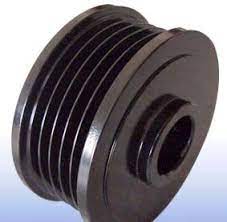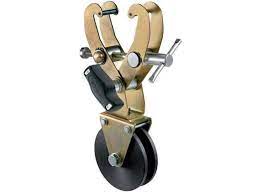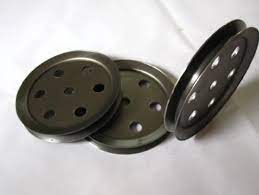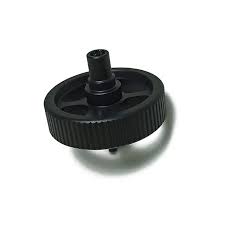Product Description
Product Description
Solenoid Valve OEM ODM Customized Machining CNC Welding Machine Spare Metal Parts
Regular nonferrous metals that we engaged in include copper, iron (Japanese standard SUM24L, SUM22; American standard 12L14, 12L15), aluminum (6060, 6063, LY12, etc.), stainless steel (SUS303, SUS316), stainless iron (SUS416, SUS430)
Regular products that we manufactured:
1. spare parts for consumer electonics:
alloy housing, alloy stands, pin, inserts, terminals, shafts, specialty screws, stand-offs, valves, etc
2. auto spare parts/motorcycle parts/new energy vehicle parts
motorcycle clutch parts, wheel rim, etc
3. industrial machine spare parts
heavy industrial machine spare parts like foundations and sleeves.
If you have any parts to be made, please feel free to contact us.
Detailed Photos
Product Parameters
| Sample profile | Weight: Customized |
| Available materials | Steel, Aluminum, Alloy ,Brass, Copper, Bronze, etc |
| Software/format | PRO/E, Auto CAD, CHINAMFG works, IGS, UG, CAD/CAM/CAE |
| Tolerance | (±5um) or as customer required |
| Test equipment | Measurement instrument, projector, CMM, Altimeter, Micrometer, Thread Gages, Calipers, Pin guage etc. |
| Processing | CNC turning, milling, drilling, auto lathe, tapping, bushing, surface treatment, anodized, casting ,injection,3D printing,etc. |
| Application | Mechinery/Education/Artificial Intellegence/Construction/Industrial/Electrical Products/Medical Products/New Energy Vehicals/Aerospace/Defense |
| MOQ | 1-10 pcs |
| QC System | 100% inspection before shipment |
| Service | OEM/ODM/Customized/Design |
| Delivery date | 7-30days |
| Package | Packaged by Carton Box or as Your Request |
Certifications
Packaging & Shipping
Company Profile
HangZhou Ohm Industrial Co., Ltd was established in 2018, specializing in the manufacturing and exporting non-ferrous metal machinery parts. Including product designing, sampling, confirming, manufacturing and shipping, we can provide you 1 stop service for any metal parts for uses like robotics, education, construction, industrial automation, consumer electronics, aerospace and defense, new energy vehicle, medical and detal, etc. All of our production is carried out in compliance with international quality-control standards and our products enjoy a good reputation both at home and abroad. We have been adhering to the policy of the best service, high quality, fast delivery. We also meet customer needs to the greatest extent. Our factory covers an area of 5000 square meters, and owes 200pcs high-precision machine tools and archived annual output of more than 30 million US dollars in 2571. We sincerely welcome friends from all over the world to visit our company and cooperate with us on the basis of long-term mutual benefits. We support your customization, if you have any needs, please feel free to contact us.
Machine Services
Our Advantages
FAQ
Q1: Where can I get product or price information?
A1: Send us an inquiry in this page or e-mail, we will contact you after CHINAMFG receipt of your mail.
Q2: Do you provide samples? Is it free or extra?
A2: Yes, we can provide samples. We will charge you based on sample processing and the fee will be returned to your bulk order.
Q3: How soon can I get products?
A3: Samples are generally 3-7 days; bulk orders are 10-25 days, depending on the quantity and parts requirements.
Q4: I don’t have any files for spare part that I want to purchase. I just have real samples. Can you produce it in large quantiity?
A4: Yes. Our professional engineer can draw CAD file CHINAMFG your sample. But the tolerance is lower than the 1 that made by orignal drawings.
Q5: Why you quotation is much lower than my regular suppliers? Is it the same quality?
A5: Because the cost of custom parts is quoted by the time of machine running and the technician operating. Our engineer has more than 20 years transforming the relevant drawings into simple machine codes, which can be optimized tremendously.
Q6: How do you guarantee the quality of your products?
A6: We can provide all kinds of testing certificates. And we will take 100% inspection during production.
Q7: What is your after-sale service?
A7: If there is any question, please provide photos or test reports, we will handle it for you in a timely manner.
/* January 22, 2571 19:08:37 */!function(){function s(e,r){var a,o={};try{e&&e.split(“,”).forEach(function(e,t){e&&(a=e.match(/(.*?):(.*)$/))&&1
| After-sales Service: | One Year |
|---|---|
| Warranty: | One Year |
| Condition: | New |
| Certification: | ISO9001, UV |
| Standard: | DIN, ASTM, GB, JIS, ANSI, BS |
| Customized: | Customized |
| Customization: |
Available
| Customized Request |
|---|
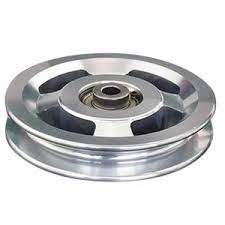
How do spinning pulleys impact the performance of fitness and exercise equipment?
Spinning pulleys play a significant role in enhancing the performance of fitness and exercise equipment. They contribute to the smooth operation, functionality, and effectiveness of various exercise machines. Here’s how spinning pulleys impact the performance of fitness and exercise equipment:
1. Resistance Adjustment:
In many fitness and exercise equipment, spinning pulleys are utilized to adjust the level of resistance. By incorporating pulleys of different sizes or changing the position of the pulley along the cable or resistance mechanism, users can modify the intensity of their workouts. This allows individuals to tailor their exercise routines to their fitness levels, goals, and preferences.
2. Smooth and Controlled Movement:
Spinning pulleys, combined with cables or belts, enable smooth and controlled movement in fitness equipment. They provide a stable and consistent motion, ensuring that users can perform exercises with proper form and technique. The smooth movement facilitated by spinning pulleys minimizes the risk of jerky or jarring motions, reducing the likelihood of injuries.
3. Multiple Exercise Options:
Fitness equipment often incorporates spinning pulleys to offer a wide range of exercise options. By utilizing pulleys with different cable attachment points and adjusting the cable paths, equipment manufacturers can provide users with versatile workout possibilities. Spinning pulleys enable exercises targeting different muscle groups, allowing users to perform various strength training or conditioning movements.
4. Cable and Handle Adjustments:
Spinning pulleys are instrumental in adjusting the length and position of cables or handles in fitness equipment. This adjustability allows users of different heights, body sizes, or exercise preferences to find the most comfortable and biomechanically suitable settings. Users can modify the range of motion and exercise angles to optimize their workouts.
5. Functional Training and Weight Stacks:
In weight training machines, spinning pulleys are used in conjunction with weight stacks to provide resistance. The weight stacks are connected to the pulleys, and the user pulls or pushes against the resistance. Spinning pulleys ensure smooth and even distribution of the weight load, enhancing the user’s ability to perform functional movements and isolate specific muscle groups.
6. Durability and Reliability:
High-quality spinning pulleys are crucial for the durability and reliability of fitness and exercise equipment. Pulleys designed to withstand the repetitive stresses and forces exerted during workouts ensure long-term performance and minimize the risk of component failures. Reliable spinning pulleys contribute to the overall safety and longevity of the equipment.
7. Maintenance Considerations:
Regular maintenance procedures, such as inspecting pulley systems, lubricating pulley bearings, and ensuring proper belt tension, are necessary to maintain the performance and functionality of fitness equipment with spinning pulleys. These maintenance practices help prevent premature wear, ensure smooth operation, and extend the lifespan of the equipment.
In summary, spinning pulleys significantly impact the performance of fitness and exercise equipment by enabling resistance adjustment, providing smooth and controlled movement, offering multiple exercise options, allowing cable and handle adjustments, facilitating functional training with weight stacks, ensuring durability and reliability, and requiring proper maintenance. These pulleys enhance the overall user experience, promote effective workouts, and contribute to achieving fitness goals in a safe and efficient manner.
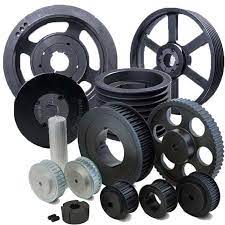
What are some real-world examples of spinning pulley applications in various industries?
Spinning pulleys find widespread applications in various industries, contributing to the smooth operation of different machines and systems. Here are some real-world examples of spinning pulley applications in various industries:
1. Manufacturing and Industrial Machinery:
– Conveyor Systems: Spinning pulleys are extensively used in conveyor systems across industries such as manufacturing, logistics, and mining. They help drive and guide conveyor belts, enabling the efficient movement of materials or products.
– Printing Presses: In the printing industry, spinning pulleys are crucial components in printing presses. They facilitate the movement of paper or printing substrates, ensuring precise registration and consistent printing quality.
– Machine Tools: Spinning pulleys are found in various machine tools like lathes, milling machines, and drill presses. They enable speed control and power transmission, allowing for different machining operations.
2. Automotive Industry:
– Engine Systems: Spinning pulleys are used in automotive engines to drive various components such as the alternator, water pump, power steering pump, and air conditioning compressor.
– Timing Systems: Timing pulleys and belts are employed in the engine’s timing system to synchronize the rotation of the camshaft and crankshaft, ensuring precise valve timing.
3. Textile Industry:
– Spinning and Weaving Machines: Spinning pulleys are integral to spinning and weaving machines in the textile industry. They facilitate the movement of fibers or yarns, ensuring proper tension and controlled feeding.
– Dyeing and Printing Machines: Spinning pulleys play a role in dyeing and printing machines by guiding fabrics through the dyeing or printing processes, ensuring accurate color application and pattern alignment.
4. Construction and Heavy Equipment:
– Cranes and Hoists: Rope pulleys, also known as sheaves, are used in cranes and hoists to provide mechanical advantage and facilitate lifting or load-bearing operations.
– Excavators and Loaders: Spinning pulleys are employed in construction equipment like excavators and loaders to transfer power and enable the movement of buckets or other attachments.
5. Agricultural Machinery:
– Harvesting Equipment: Spinning pulleys are used in agricultural machinery such as combine harvesters to drive components like the cutting platform or conveyor belts.
– Irrigation Systems: Pulleys are utilized in irrigation systems to drive pumps or control the movement of irrigation pipes or tubes.
6. HVAC Systems:
– Air Handling Units: Spinning pulleys are used in air handling units to drive fans and facilitate air circulation and ventilation.
– Cooling Towers: Pulleys are employed in cooling towers to drive the fan blades, promoting efficient cooling of water or other fluids.
These are just a few examples of spinning pulley applications in various industries. Spinning pulleys play a vital role in many other sectors, including mining, food processing, packaging, woodworking, and more. The versatility and functionality of spinning pulleys make them essential components in numerous machines and systems across different industries.
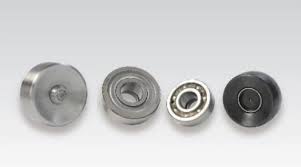
Can you explain the key components and design features of a spinning pulley?
A spinning pulley consists of several key components and design features that allow it to function effectively in mechanical systems. Here’s a detailed explanation of these components and features:
1. Hub:
The hub is the central part of the spinning pulley. It is typically a solid cylindrical structure that provides support and stability to the pulley. The hub is mounted on a shaft or axle, allowing the pulley to rotate freely.
2. Rim or Groove:
The rim or groove is the outer edge of the spinning pulley. It is specifically designed to accommodate a rope, belt, or cable. The rim is usually rounded or flat, depending on the application. Its primary function is to guide and retain the rope or belt during operation, preventing slippage and ensuring efficient power transmission.
3. Diameter:
The diameter of a spinning pulley refers to the distance across its outer rim. It plays a crucial role in determining the speed and mechanical advantage of the pulley system. Larger diameters result in increased speed but reduced mechanical advantage, while smaller diameters provide higher mechanical advantage at the expense of speed.
4. Material:
Spinning pulleys are typically made from durable materials such as metal, plastic, or composite materials. The choice of material depends on factors such as the load capacity, environment, and specific application requirements. Metal pulleys, such as steel or aluminum, are commonly used in heavy-duty applications, while plastic or composite pulleys are preferred in lighter-duty or corrosive environments.
5. Bearings:
Bearings are essential components in spinning pulleys as they enable smooth rotation. They reduce friction between the rotating hub and the shaft, allowing the pulley to spin with minimal resistance. Common types of bearings used in spinning pulleys include ball bearings and roller bearings.
6. Mounting Mechanism:
Spinning pulleys are typically mounted on a shaft or axle, which allows them to rotate freely. The mounting mechanism may involve set screws, keyways, or other fastening methods to secure the pulley to the shaft. The design of the mounting mechanism should ensure proper alignment and prevent slippage during operation.
7. Flanges:
Some spinning pulleys feature flanges on either side of the rim. Flanges are raised edges or rims that help keep the rope or belt aligned and prevent it from slipping off the pulley during operation. Flanges provide additional guidance and stability, particularly when the pulley is subjected to lateral forces or when the rope or belt is under tension.
8. Tensioning Mechanism:
In certain applications, spinning pulleys may include a tensioning mechanism. This mechanism allows for the adjustment of tension in the rope or belt, ensuring optimal performance and preventing slippage. Tensioning mechanisms can involve springs, levers, or other devices that allow for easy adjustment and maintenance of tension.
These are the key components and design features of a spinning pulley. The combination of these elements enables the pulley to effectively transmit power, change the direction of force, and create mechanical advantage in various mechanical systems.


editor by CX
2024-05-17
